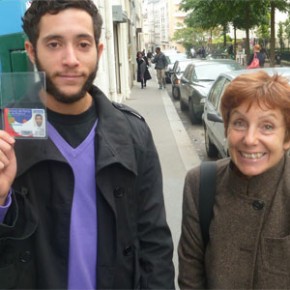*This article was first published by Transparify, a blog on transparency and think tanks.
A little while ago, the Sunlight Foundation had a great 7-part blog series listing ‘50+ reasons not to release open data’: apathy, confusion, it’s hard, cost, staffing concerns, legality, accuracy.
One important reason which I believe was missing from the list is the concern that it could unleash unwanted scrutiny, especially from journalists. After all, good news generally doesn’t make the news. What guarantees that disclosing funding data will not backfire at some point, especially when you’re a large organization dealing with multiple partners?
It is naturally tempting to not fully walk the transparency talk. This was made clear in a conversation I once had with a senior manager of an organization widely regarded as highly transparent: “We are presenting information and data in a way that is positive to [us]. We show the main performance indicators, the success stories, the positive changes brought by [us]. But we’re not necessarily going to focus on a country which is not working because of all kinds of other contextual information that we don’t necessarily want to talk about or go in much detail. It makes sense: we’re not going to shoot ourselves in the foot”.
Does it really make sense? I was confronted by this question when I tried to initiate a training program for media representatives to make use of a former employer’s funding data. “Why invite the press to dig up stories that could potentially be embarrassing, or create more communication crises than we could deal with?”, I was asked. Here is what I think:
- Being open about what goes wrong (and what you do about it) is good for your reputation. It shows courage, a sense of responsibility and seriousness regarding transparency. Transparency is not meant to paint a rosy picture of reality but to highlight things as they are: successes AND challenges AND failures. Failure is okay as long as it allows you to learn and to act on what needs improvement. Running a negative story yourself – taking the time to prepare, to put things into context, to show what is being done to address the problem – will always be better than fighting allegations of a cover-up.
. - Bad news may be good news when it is factual, fair and balanced. It can help to flag problems while there is still time to do something about them. Large think tanks, global organizations and multi-stakeholder partnerships cannot watch over everything everywhere. Providing journalists with easy access to the whole story about their funding data may serve as an early warning system, to flag issues before it is too late, to limit the damage done by mismanagement, misuse of funds or corruption.
Embracing transparency half-heartedly may be a more risky option than not being transparent at all, a missed opportunity to work alongside the media for positive outcomes.
Robert Bourgoing is an independent consultant and aid transparency expert. He maintains a blog and a LinkedIn discussion group on the demand side of aid transparency in developing countries.




Laisser un commentaire
Rejoindre la discussion?N'hésitez pas à contribuer !